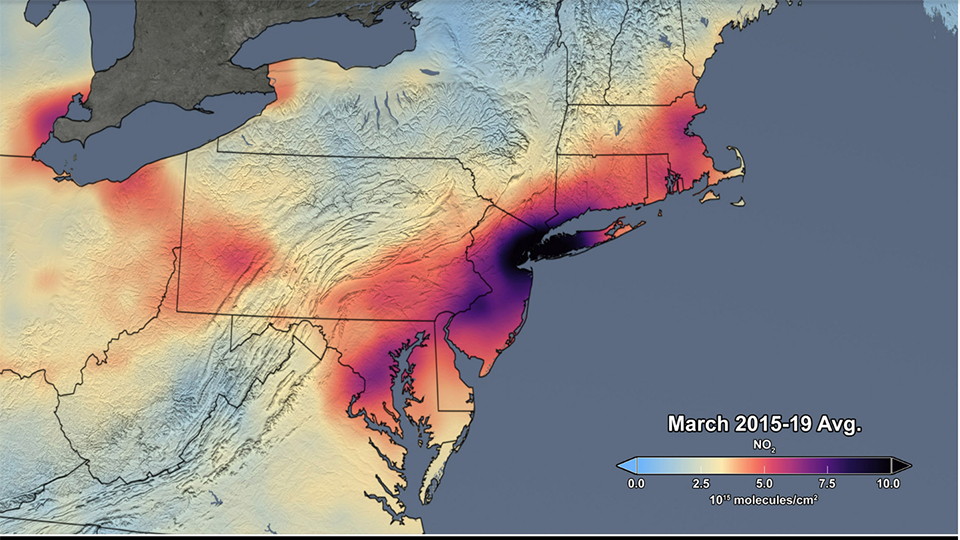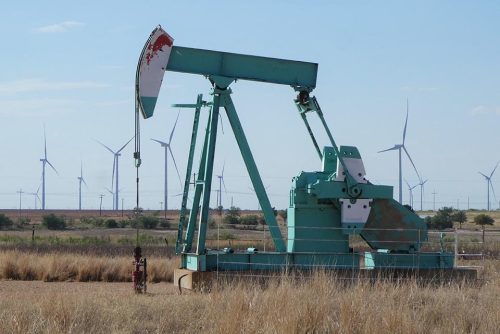Climate Change
In response to SNJ Today’s recent Earth Day poll of residents’ thoughts on this topic, our columnist writes an insightful article that aims to separate internet noise from the scientific evidence.


In the April 17 issue of SNJ Today, I read about people’s reactions to climate change with interest. A number of those polled feel that climate change is a hoax developed by liberal extremists. To the contrary, some of the earliest administrations to look at global warming were Republican. According to the National Security Archive, George Washington University, in the 1980s GOP presidents Ronald Reagan and George H.W. Bush actively promoted measures to combat climate change. In 1987 Reagan overruled objections in his own cabinet to the proposed Montreal Protocol treaty to protect the ozone layer.
National Archive December 2, 2015, goes on to report: In connection with the Montreal Protocol (negotiated in 1987 and put into effect in 1989), both Reagan and Bush 41 showed a clear desire to tackle environmental concerns and to lead the global community in that effort…. Protests by the Domestic Policy Council, led by Attorney General Edwin Meese and other agency heads, prompted Reagan to step in to ensure adoption of the final set of U.S. objectives for the treaty. Bush basically shared his predecessor’s views on entering office in January 1989.
Both presidents’ secretaries of state—George P. Shultz and James A. Baker III—played key roles in blocking efforts by other Cabinet secretaries to frustrate implementation of more environmentally friendly policies. For example, memos for senior State Department officials … note that “Global climate change is the most far-reaching environmental issue of our time” and that notwithstanding the need for continued research, “We simply cannot wait—the costs of inaction will be too high.”
The world’s top scientists assure us that the world is warming. In fact, it is indisputable. We are not simply seeing the result of normal variations over centuries. Ice core samples, rising waters, melting glaciers, permafrost, and ice caps are real. The flooding of shoreline communities is real. Plant and animal geographic ranges are changing. Fish species are moving toward the poles seeking cooler waters. The ocean is warming. The highest temperatures on record denote real change and not simply weather.
The United States Geological Service (USGS) assures us that temperatures are rising worldwide due to greenhouse gases being trapped in the atmosphere. Droughts are longer and more extreme the world over. Tropical storms are more severe due to warmer ocean temperatures. The USGS echoes the indicators previously stated.
In an effort to see how many members of the general public became climate change “deniers,” I turned to a series of interviews that were conducted on Living on Earth, a National Public Radio broadcast.
Commentator Steve Curwood’s guest was Naomi Oreskes, a Harvard historian of science, who discussed disinformation and how it has shaped our ideas about climate change.
Oreskes shared that in 1989 a collective of major oil and gas companies established the Global Climate Coalition. On the surface, it was intended to appear independent of the fossil fuel industry. You might even think it was a grassroots or public social movement that cared about the climate. Its real agenda was to prevent the U.S. Congress from ratifying the Kyoto Protocol. If you remember, George H. W. Bush supported the UN Framework Convention on Climate Change. He famously signed and committed the United States to take action to stop the “dangerous anthropogenic [man-made] interference with the climate system.” But the 1992 convention was a statement of principle. It lacked specificity. Since about a dozen of the world’s wealthiest and most industrialized nations produced 80 percent of the world’s greenhouse gases, the thinking was that they should formulate and share in the solution.
This is when the Global Climate Coalition kicked into high gear in an effort to influence public opinion. Its main strategy was to convince the general public and elected officials that the science of climate change was highly uncertain. They claimed there was no scientific consensus. They ran ads declaring that the Kyoto Protocol (1997) was unnecessary and would cost a lot of money.

In July of 1997, the U.S. Senate’s Byrd-Hagel Resolution held that our country should not support a climate treaty that would mandate new commitments to reduce greenhouse gas emissions (this was a bipartisan proposal). Again the Global Climate Coalition was the key lobbyist. Harvard’s Oreskes stressed that the group’s goal was to persuade Congress not to sign the Kyoto Protocol, characterizing it as unfair and evoking “what-about-ism”: “Well, what about China? Why would we cut our emissions but China gets a green light to pollute?” In the end the Senate vote for the resolution was 95-0 in favor of not reducing greenhouse gases! The Kyoto treaty was dead. Oreskes said, “When that was killed, that was the last time that we ever had any serious international proposal for binding limits on greenhouse gas emissions.”
Curwood pointed out that the fossil fuel industry has maintained its influence through campaign financing, keeping those in office who agree with its version of the facts. The Citizens United Supreme Court decision, removing limits on the amount of money individuals and groups can give to candidates and politicians, has allowed hundreds of millions of dollars to cement allegiance to its causes.
While scientists have become increasingly more solidified in their position on climate change, politicians and the general public continue to be influenced by the oil and gas industry, their money, and their positions. Oreskes explained: “We’re seeing a politics of distraction. The United Nations Convention on Climate Change began by doing something clever, announcing some steps to restrict methane emissions from oil and gas production. That’s not a bad thing; as long as you’re still producing oil and gas, you definitely would like to reduce the methane leakage from oil and gas wells. But it’s a small piece of the whole picture. And if it distracts attention from the larger fact, which is that you’re still burning oil and gas, you’re still producing and selling oil and gas, then it becomes the equivalent of the tobacco industry pushing low tar cigarettes (paraphrased).”
The next Living on Earth interview was with Imran Ahmed, the CEO and founder of the Center of Countering Digital Hate. He studied the way popular online platforms are geared to shape our perceptions on climate change, finding that there is a new strategy to influence both believers and deniers. “We used an AI search tool to analyze thousands of hours of YouTube videos produced by prominent climate deniers and study the evolution of the types of claims they’ve been making between 2018 and 2023. And what we saw was startling: …[C]limate deniers have transitioned from the old climate denial, which is rejecting anthropogenic (human caused) climate change, to a new climate denial, which is casting doubt on solutions.”
So what is happening is a new form of attack: Solutions won’t work, and new technology is too expensive—which ultimately leaves you in a status quo.
I personally see the loss of press coverage in the United States, and instead the reliance on social media for news, as serious deterrents to problem-solving. Instead we focus on someone’s hidden agenda rather than an actual effort to resolve issues. A local example is that shore communities didn’t want to see windmills in their viewscape, and to discourage them they suggested that whale deaths were being caused by windmill equipment. But the windmill industry hadn’t even begun any testing that emitted sounds. State biologists did, however, identify that some of the whale deaths were caused by boat collisions. No one followed up on that aspect. Distraction, possibly encouraged by the fossil fuel industry, left real solutions unaddressed.

Ahmed has learned by studying disinformation that all the underpinnings are also lies. Online voices build conspiracies—that solar power, wind power, tidal power, and electric vehicles can’t substantially help mitigate the impacts of climate change. For example they state that the supply chain of an electric vehicle (EV) uses excessive CO2. But that is nonsense. The EPA and a lot of independent scientists have proved that during the lifetime of an EV, emissions are in fact lowered significantly.
My advice is to look at the source of information before reading online platforms. If you were seeking to learn more about an illness, you wouldn’t look at advertisements for wonder drugs; instead you would search out postings by universities and hospitals.
I’d like to end on an upbeat note. Let’s return to Naomi Oreskes who talked about empowerment. We don’t have to rely on Congress to make changes in our own lives. She states, “We know from various studies that if you think about all the greenhouse gas emissions that are going into the atmosphere, it breaks down roughly 60/40. Sixty percent have to do with using fossil fuels, and the other 40 percent has to do with the land [due to] agriculture, deforestation, and other forms of land use changes. A big piece of those emissions come from animal agriculture, particularly in the United States, beef.”
- We can change our diets and eat less meat, and it’s kinder on the pocketbook too.
- We can decide that the cars we drive will use less fuel or depend more on electric vehicles. And we can advocate for more electric car infrastructure.
- We can walk more and drive less.
- Oreske suggests working harder to establish green standards for local building codes.
- There are plenty of places where we can read about how to be greener, such as choosing reusable bags and composting our kitchen vegetable waste.
We have the power to start by making a difference in our own actions! And we can begin today.
Sources
- Living on Earth, January 19, 2024 Climate Deception and January 26, 2024 The New Climate Denial.
- In the Tri-State area Living on Earth airs on Saturday mornings at 7 a.m. on WHYY 90.9 FM, or you can listen to past episodes online at npr.org/podcasts
- USGS.gov – What are some of the signs of climate Change?









